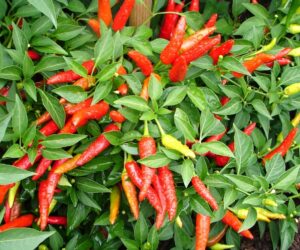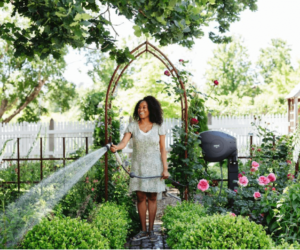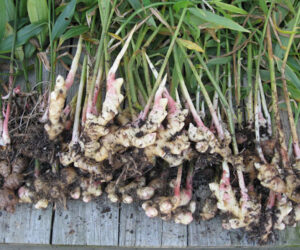Oregano is a herb probably most commonly known and used on pizzas. It can be grown both inside and outside your home so you can grow and enjoy fresh oregano no matter where you live. This amazing herb is a great source of fiber, vitamins A, B6, C, E, and K. Oregano also contains folate, magnesium, iron, calcium, and potassium in oregano.
Besides excellent health benefits, it will also add a tasty flavor to your soups, salads, sauces, or many other dishes. Use this great advice on how to grow it in your own home.
1. Location

The first thing before you start planting would be to choose the best spot to plant your oregano. It is a herb that prefers full sun. If you live in a colder part of the world, it might be better to plant your herb inside. You can easily transfer the pot with the oregano outside after it gets warmer.
2. Planting

Via bedfordcounty.locallygrown.net
Plant oregano out after all danger of frost has passed. Put your oregano seeds around 30 centimeters apart, 60 centimeters deep, or bury clippings a little bit more than one centimeter deep. Be patient while waiting for your seedlings to emerge from the ground if you decide to plant oregano seeds. They sprout quite slowly.
3. Soil

Via www.youtube.com
Oregano grows best when the soil is moderately fertilized. Normally you won’t need to add compost or fertilizer to make it thrive well. The herb grows best in soil that is sandy, well-drained, and relatively dry. During the first few months of growth, you have to water your plant regularly, and once it is established, you can reduce the amount.
4. Watering

Via smalltownstock.photoshelter.com
Water your oregano regularly but be careful not to overdo it. You should wait for the soil to go completely dry before the next watering. You can check the soil around the plant with your finger if it feels dry. When you are watering it, you should do it moderately. When planted in a container, it should be treated in a similar way to outdoor-grown oregano.
5. Trimming

Via www.youtube.com
For your oregano to grow thicker, you should trim it. Use a pair of scissors to cut the leaves and ends of your plant. You will notice the herb will branch at that point where it will be trimmed. It will also help to prevent excessive stem growth.
6. Harvesting

Via homyden.com
The best time to harvest oregano is in early summer, just before the plant starts blooming. The herb reaches its peak potency at that time, but the plants can be harvested anytime once they have reached around 13 centimeters. Try always to pick up oregano leaves in the morning.
7. Drying

There is more than one way to dry oregano for preservation. You can pull off the tiny leaves and dry them separately, or you can dry the whole stem. Hang bundled stems together in a dry and dark place but try not to bundle them together too densely. Turn it around several times during this process.
8. Storing
Oregano leaves are usually stored dried, but you can also freeze them. Once the leaves are dehydrated, you can easily remove them for storage. You need to store them in a dark and dry location to preserve the most flavor. It is best to use glass bottles or airtight plastic containers. The best flavor of dry oregano will last for up to six months.
9. Problems

Via www.missouribotanicalgarden.org
There are not many problems that can affect oregano. It is not likely that some disease will be affected by some disease, but it can be harmed by whiteflies, spider mites, and Powdery mildew. On the other hand, the herb will act as a good repellent of aphids.
10. Good neighbors

Via tcpermaculture.blogspot.com
Oregano is a perfect companion plant for many different plants. It grows especially well with tomatoes, broccoli, basil, and peppers. The herb will protect some other plants against certain pests. When it is allowed to spread among the peppers freely, it can provide ground cover and humidity.




